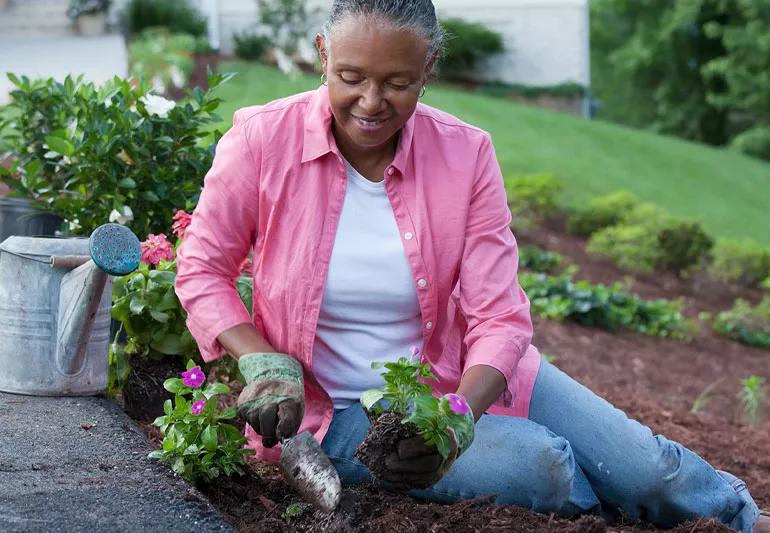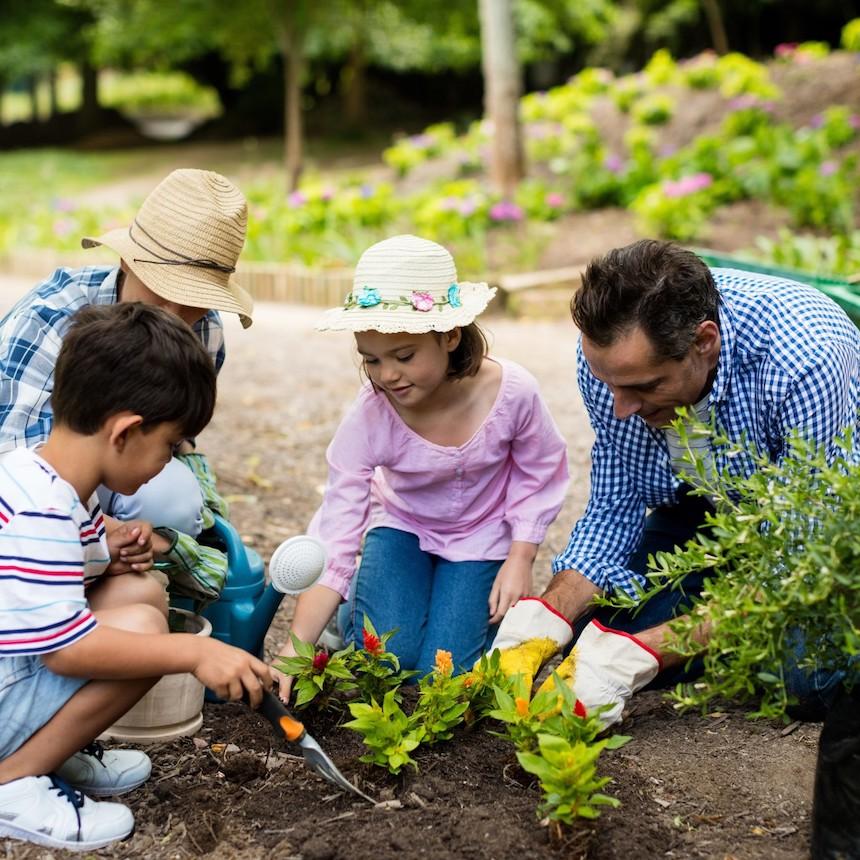Gardening Tips to Boost Your Visual Allure and Neighborhood Charm
Wiki Article
Expert Gardening Tips for Creating a Lasting and Eco-Friendly Yard
Embarking on the journey to develop a sustainable and environmentally friendly garden entails a series of purposeful selections and techniques that not only improve the appeal of your space however also add positively to the environment. To reveal more useful techniques and experienced insights, allow us check out the essential elements that define an eco mindful yard.Choose Native Plants
Selecting native plants for your yard is a fundamental action towards accomplishing sustainability. In addition, indigenous plants commonly call for much less water as soon as developed, contributing to much more effective water use.Past their sensible advantages, native plants play a vital function in supporting neighborhood biodiversity. They supply essential environment and food resources for native wild animals, consisting of pollinators such as , birds, and butterflies. This promotes a balanced community, which is important for the health of your yard and the surrounding atmosphere.

Implement Water Preservation
Implementing water conservation methods is crucial for preserving a lasting yard. Reliable water use not only lowers the environmental effect yet additionally ensures that plants get appropriate hydration without waste. One reliable approach is to utilize drip watering systems, which supply water directly to the plant origins, minimizing evaporation and runoff. This targeted method can dramatically reduce water usage contrasted to conventional lawn sprinklers.In addition, mulching is a beneficial practice for saving water. By applying a layer of organic mulch, such as timber chips or straw, around the base of plants, garden enthusiasts can decrease dirt dissipation and preserve consistent moisture degrees. Mulch likewise helps regulate dirt temperature level and reduces weed growth, more adding to plant wellness.
Rain harvesting is an additional lasting method. Installing rain barrels or other collection systems allows gardeners to save and capture rainwater, which can later be utilized during completely dry durations. This not only preserves local water yet additionally supplies a natural, chemical-free resource for irrigation.
Lastly, picking drought-tolerant plant species can considerably decrease water requirements. These plants are adjusted to flourish in low-water problems, making them suitable for environment-friendly gardens. gardening tips. Implementing these water preservation techniques will certainly promote a resilient, lasting garden
Usage Organic Gardening Approaches

Pest administration in a natural yard counts on incorporated pest management (IPM) techniques. These consist of motivating valuable pests, making use of all-natural killers like ladybugs and lacewings, and implementing crop rotation to disrupt pest life cycles. Companion growing, where particular plants are expanded with each other to drive away parasites or bring in valuable pests, is one more reliable method.
Weed control is taken care of via mulching and manual removal, instead than counting on herbicides. Compost not just suppresses weeds but additionally preserves wetness and improves soil wellness as it damages down. Organic mulches, such as straw, timber chips, and leaves, are specifically beneficial.
Develop Wild Animals Habitats
Creating wild animals habitats within your yard not only improves biodiversity but additionally sustains the ecosystem's equilibrium. Start by including native plants, as these like it are fit to your local environment and provide crucial food and shelter for wild animals.Consider including a water feature, such as a pond or birdbath, to give a consistent water resource. Water elements attract a selection of species, from amphibians to pollinators, improving the garden's vigor. Additionally, setting up birdhouses, bat boxes, and insect resorts provides risk-free nesting websites and encourages biodiversity.
Leave some areas of your garden undisturbed, allowing leaf litter and fallen branches to build up. By focusing on these lasting methods, your yard can come to be a refuge for neighborhood wild animals, promoting environmental health and wellness and sustainability.
Technique Composting and Mulching
A vital facet of lasting horticulture, composting and mulching, dramatically boosts dirt wellness and lowers waste. Composting entails reusing natural products such as kitchen area scraps, turf cuttings, and leaves. These materials decompose to form nutrient-rich garden compost, which functions as a natural fertilizer. Unlike artificial plant foods, garden compost enriches the soil with valuable microbes and vital nutrients, promoting a healthier yard environment.Mulching, on the various other hand, next includes covering the soil surface area with not natural or natural materials, such as straw, timber chips, or shredded leaves. This method offers numerous benefits: it saves dirt wetness, subdues weed growth, and moderates dirt temperature. Compost additionally slowly breaks down, including raw material to the dirt and more improving its fertility.
To practice efficient composting, ensure your compost heap has an equilibrium of eco-friendly products (abundant in nitrogen) and brownish materials (abundant in carbon), keeping ample aeration and wetness. gardening tips. Routinely turning the stack increases decomposition. For mulching, apply a 2-3 inch layer around plants, ensuring it does not directly call stems or trunks to prevent rot
Verdict

Choosing indigenous plants for your yard is a fundamental action toward attaining sustainability.Moreover, incorporating indigenous plants can improve the visual charm of your garden. These plants are adapted to thrive in low-water problems, making them perfect for eco-friendly yards. Executing these water preservation methods will certainly Full Report foster a resistant, sustainable garden.
In verdict, establishing a lasting and environmentally friendly yard includes the critical selection of indigenous plants, the fostering of water conservation methods, and the execution of organic gardening approaches.
Report this wiki page